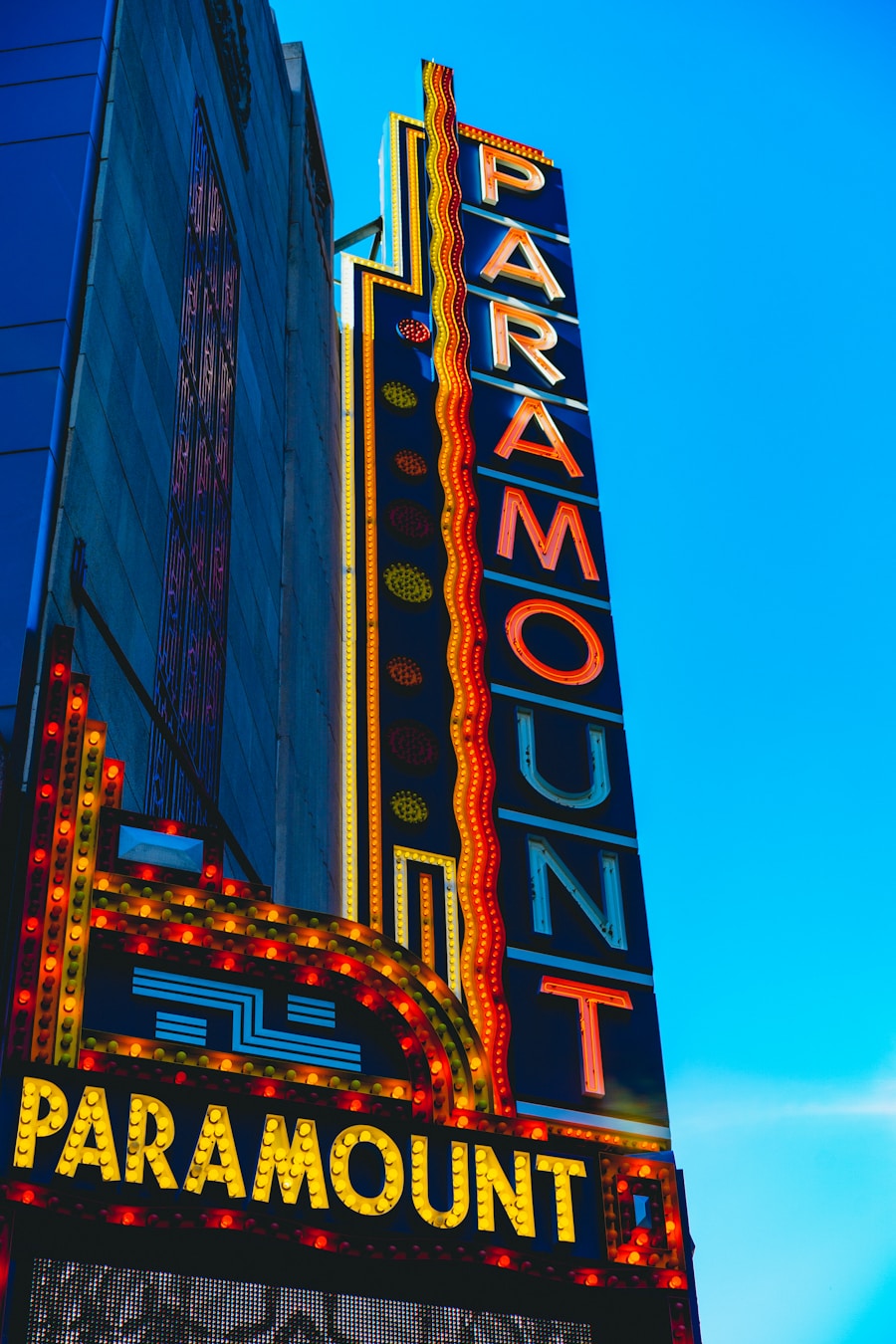Download links
How to install Exploring the Intersection of Arts & Entertainment APK?
1. Tap the downloaded Exploring the Intersection of Arts & Entertainment APK file.
2. Touch install.
3. Follow the steps on the screen.
Description
Arts and entertainment have long served as mirrors reflecting societal values, beliefs, and struggles. From the ancient cave paintings that depicted the daily lives of early humans to contemporary films that tackle complex social issues, the influence of artistic expression on society is profound and multifaceted. Art has the power to evoke emotions, provoke thought, and inspire action.
For instance, the works of artists like Picasso and Goya have not only captured the essence of their times but have also sparked conversations about war, suffering, and human rights. Similarly, literature has played a pivotal role in shaping public opinion and fostering social change, as seen in the works of authors like Harriet Beecher Stowe, whose novel “Uncle Tom’s Cabin” galvanized the abolitionist movement in the United States.
Music festivals, theater productions, and film screenings bring people together, transcending barriers of language, ethnicity, and geography. The global phenomenon of K-pop, for example, illustrates how music can bridge cultural divides and create a shared sense of identity among diverse audiences. The rise of streaming platforms has further democratized access to various forms of entertainment, allowing individuals from different backgrounds to engage with content that resonates with their experiences.
This interconnectedness fosters empathy and understanding, enabling societies to navigate complex social landscapes more effectively.
Key Takeaways
- Arts and entertainment have a significant influence on shaping societal norms and values
- The digital age has revolutionized the way arts and entertainment are created, consumed, and distributed
- Diversity and inclusion play a crucial role in ensuring representation and accessibility in arts and entertainment
- The connection between arts and entertainment industries is essential for fostering creativity and collaboration
- Technology has greatly impacted the arts and entertainment, from production to distribution, and audience engagement
- The future of arts and entertainment is marked by emerging trends and innovations that continue to push boundaries and redefine the industry
The Evolution of Arts and Entertainment in the Digital Age
The digital age has revolutionized the landscape of arts and entertainment, transforming how creators produce and distribute their work while simultaneously altering how audiences consume it. The advent of the internet has dismantled traditional gatekeeping mechanisms that once defined the industry. Independent artists can now share their work with a global audience through platforms like YouTube, SoundCloud, and Instagram, bypassing traditional channels such as record labels or publishing houses.
This shift has led to a democratization of creativity, where diverse voices can emerge and flourish without the constraints imposed by established institutions. Furthermore, the digital age has given rise to new genres and forms of artistic expression. Virtual reality (VR) and augmented reality (AR) have opened up innovative avenues for storytelling, allowing audiences to immerse themselves in narratives in ways previously unimaginable.
For instance, projects like “The Night Cafe,” a VR experience based on Vincent van Gogh’s paintings, invite users to step into the artist’s world and interact with his creations. Additionally, social media platforms have become vital tools for artists to engage with their audiences directly, fostering a sense of community and collaboration that was often absent in traditional models. This evolution not only enhances the accessibility of art but also encourages a more participatory culture where audiences can contribute to the creative process.
The Role of Diversity and Inclusion in Arts and Entertainment

Diversity and inclusion have emerged as critical themes within the arts and entertainment sectors, reflecting a growing recognition of the importance of representation in shaping cultural narratives. Historically, many artistic mediums have been dominated by a narrow range of voices, often sidelining marginalized communities. However, recent years have seen a concerted effort to amplify diverse perspectives across various platforms.
This shift is not merely a trend; it is a necessary evolution that enriches the cultural landscape by providing a more comprehensive understanding of human experiences. The impact of diversity in storytelling is evident in film and television, where productions like “Black Panther” and “Crazy Rich Asians” have achieved both critical acclaim and commercial success while showcasing underrepresented communities. These films challenge stereotypes and offer nuanced portrayals that resonate with audiences worldwide.
Moreover, initiatives aimed at increasing representation behind the camera—such as mentorship programs for women and people of color—are essential for fostering an inclusive environment where diverse stories can thrive. The push for inclusivity extends beyond race and ethnicity; it encompasses gender identity, sexual orientation, disability, and socioeconomic status, ensuring that a wide array of voices contributes to the artistic dialogue.
Exploring the Connection Between Arts and Entertainment Industries
| Metrics | Data |
|---|---|
| Number of arts and entertainment businesses | 5000 |
| Employment in arts and entertainment industries | 1.2 million |
| Revenue generated by arts and entertainment industries | 200 billion |
| Percentage of population engaged in arts and entertainment activities | 40% |
The arts and entertainment industries are intricately linked, each influencing and enriching the other in myriad ways. While arts encompass a broad spectrum of creative expressions—including visual arts, literature, music, and performing arts—entertainment often refers to commercially driven forms such as film, television, and live performances. This relationship is symbiotic; artistic innovation fuels entertainment content while commercial success provides resources for artists to explore new ideas.
For example, many successful films are adaptations of literary works or visual art pieces. The transition from page to screen or canvas to stage often involves reinterpreting original material through a contemporary lens. The adaptation of novels like “The Great Gatsby” or graphic novels like “Watchmen” into films demonstrates how literature can inform cinematic storytelling while reaching wider audiences.
Conversely, popular entertainment can inspire new artistic movements; for instance, the rise of hip-hop culture has influenced visual artists who incorporate elements of street art into their work. This cross-pollination fosters creativity and encourages collaboration across disciplines.
The Impact of Technology on Arts and Entertainment
Technology has been a driving force behind the transformation of arts and entertainment over the past few decades. From advancements in sound engineering that enhance music production to sophisticated CGI techniques that revolutionize filmmaking, technology continues to reshape how art is created and experienced. The rise of digital tools has empowered artists to experiment with new mediums and techniques that were previously inaccessible or prohibitively expensive.
In music production, software like Ableton Live or Pro Tools allows musicians to compose, record, and edit their work with unprecedented precision.
Similarly, filmmakers can utilize affordable editing software such as Adobe Premiere Pro or Final Cut Pro to produce compelling narratives without relying on large production budgets.
The accessibility of these tools has led to an explosion of creativity across genres and styles. Moreover, technology has transformed audience engagement through interactive experiences. Video games have emerged as a legitimate form of artistic expression, blending storytelling with interactivity in ways that challenge traditional narrative structures.
Titles like “Journey” or “The Last of Us” showcase how video games can evoke deep emotional responses while offering players agency in shaping their experiences. Additionally, live-streaming platforms enable artists to connect with audiences in real-time, breaking down geographical barriers and fostering global communities around shared interests.
The Future of Arts and Entertainment: Trends and Innovations

The Rise of Sustainable Arts and Entertainment
As awareness of climate change intensifies, the arts and entertainment industries are placing a growing emphasis on sustainability. Artists are exploring eco-friendly practices in their work, from using sustainable materials in visual art to creating performances that raise awareness about environmental issues. Film productions are also adopting greener practices, such as reducing waste on set or utilizing renewable energy sources.
Immersive Experiences: The Future of Storytelling
Immersive experiences are likely to gain traction as audiences seek more engaging ways to interact with art and entertainment. The rise of immersive theater productions and interactive art installations reflects a desire for participatory experiences that blur the lines between creator and audience. As technology continues to evolve, we can expect even more innovative approaches to storytelling that challenge conventional formats.
A Dynamic Landscape: Tradition and Innovation
The future of arts and entertainment is characterized by an ongoing dialogue between tradition and innovation. As creators navigate this dynamic landscape, they will continue to explore new avenues for expression while addressing pressing social issues through their work. The interplay between technology, diversity, sustainability, and audience engagement will shape the next chapter in this ever-evolving narrative.
If you’re looking for a unique blend of strategy and luck in the world of arts and entertainment, check out the article on TG777’s card chess game. This innovative take on the classic game of chess adds an element of chance to keep players on their toes. Whether you’re a seasoned chess player or just looking for a new challenge, this game is sure to provide hours of entertainment.
FAQs
What is considered arts & entertainment?
Arts & entertainment encompasses a wide range of creative activities, including visual arts, performing arts, music, literature, film, television, and other forms of media and entertainment.
What are some examples of arts & entertainment?
Examples of arts & entertainment include painting, sculpture, dance, theater, opera, music concerts, literature readings, film screenings, television shows, and other cultural events and activities.
What is the importance of arts & entertainment in society?
Arts & entertainment play a crucial role in society by providing a platform for creative expression, cultural exchange, and entertainment. They also contribute to the economy and tourism, and help to preserve and promote cultural heritage.
How does arts & entertainment impact individuals?
Engaging with arts & entertainment can have a positive impact on individuals by inspiring creativity, fostering emotional expression, and providing opportunities for relaxation and enjoyment. It can also contribute to personal growth and cultural awareness.
What are some popular trends in arts & entertainment?
Some popular trends in arts & entertainment include the use of technology in creative expression, the rise of digital media and streaming platforms, the blending of different art forms, and the increasing focus on diversity and inclusion in cultural representation.





